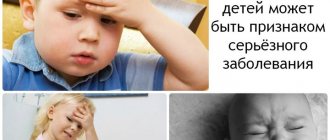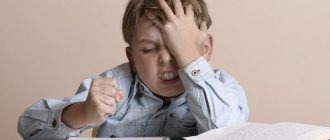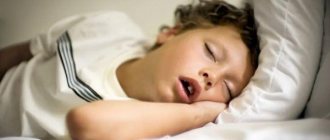Alalia is a severe underdevelopment or complete absence of speech caused by organic lesions of the cortical speech centers of the brain that occurred in utero or in the first 3 years of a child’s life. With alalia, there is a late appearance of speech reactions, a poor vocabulary, agrammatism, a violation of the syllabic structure, sound pronunciation and phonemic processes. A child with alalia needs a neurological and speech therapy examination. Psychological, medical and pedagogical effects for alalia include drug therapy, the development of mental functions, lexico-grammatical and phonetic-phonemic processes, and coherent speech.
Despite its rarity, the disease is more often diagnosed in boys than in girls. It can have varying degrees of severity - from the most serious, in which speech appears only after ten years, to a milder one, similar to speech underdevelopment. The most important thing is to distinguish this disorder from mental retardation. Basically, children do not have developmental disorders (it can only be disrupted under the influence of public and peer oppression). If treatment is not timely at an early age, the child will later have problems with social adaptation and difficulties in finding his place in society.
Causes of alalia
The reasons that lead to the occurrence of alalia are very diverse. During specific periods of early ontogenesis they may be different. In the antenatal period, organic damage to the speech centers of the brain can be caused by fetal hypoxia, intrauterine infection, the threat of spontaneous abortion, and chronic somatic diseases of the pregnant woman.
A complicated pregnancy can lead to complications during childbirth and the occurrence of perinatal pathology. Alalia can be a consequence of premature, prolonged or rapid labor, asphyxia of the newborn, or the use of obstetric instruments.
Among the etiopathogenetic factors of alalia that affect the baby in the first years of life are meningitis, encephalitis, traumatic brain injury, and somatic diseases that lead to depletion of the central nervous system. Researchers also note a hereditary predisposition to alalia. Factors that aggravate the effect of certain causes of alalia are frequent illnesses of the child in the first years of life, operations performed under general anesthesia, and unfavorable social conditions. Usually, the history of small patients with alalia reveals the influence of a whole complex of factors.
Organic damage to the brain leads to a slowdown in the maturation of nerve cells. The result is a decrease in neuronal excitability, inertia of nervous processes and functional exhaustion of brain cells. In alalia, organic lesions of the cerebral cortex are mild but multiple in nature, so the possibilities for independent speech development are very limited.
Types of pathology
TORCH infections: rubella, toxoplasmosis, cytomegalovirus, herpes viruses and a number of other pathogens are able to penetrate the placenta into the fetus’s body, causing various disorders, including those related to the neurological and mental sphere:
- prolonged fetal hypoxia;
- toxicosis and eclampsia;
- the mother has diseases of internal organs, for example, hypertension, diabetes, etc.
Damage to the nervous system may be associated with the birthing process. A similar pathogenesis of the disease is typical for birth trauma, asphyxia during delivery or its long course.
In the first years of a baby’s life, alalia can occur as a result of organic lesions: traumatic brain injury, neuroinfection (meningitis and encephalitis) and general malnutrition. Modern research shows that underdevelopment of the cerebral cortex may be associated with hereditary predisposition and systemic depletion against the background of malnutrition.
In addition to the direct effect of these causes, the health background against which they develop is important. Children who often suffer from acute respiratory viral infections, with rickets, endocrinopathies and other pathologies of internal organs, more often suffer from alalia. In addition, the psychological climate in the family is important for the development of the baby’s brain, including active communication with parents, other children, etc.
Alalia, the onset of which always occurs in childhood, is usually divided into several types, depending on the affected brain structure. In speech therapy, the following classification is most often used:
- motor or expressive alalia;
- sensory or impression pathology;
- mixed form, combining development mechanisms and characteristics of the two previous types.
The pathogenesis of motor alalia is associated with primary damage to the cortical parts of the cerebral hemispheres responsible for speech articulation. As a rule, the precentral or postcentral gyri are affected. The condition is accompanied by a violation of one’s own speech while maintaining the ability to understand other people.
With the development of a pathological process in Wernicke's area (the posterior part of the superior temporal gyrus), not only the child's speech suffers, but also his ability to perceive and understand the conversation of people around him. During a consultation with a neurologist and ENT doctor, no organic problems with the structures of the inner ear are detected.
Motor form
Motor alalia is characterized by the presence of two types of symptoms: speech and non-speech. Characteristic non-speech manifestations are associated with neurological and psychological dysfunction. In children, in addition to alalia, motor disorders are detected in the form of awkwardness, decreased fine motor skills of the hands, and impaired coordination of movements. The child has difficulty fastening buttons, using cutlery, or playing with mosaics and puzzles.
Psychological symptoms are observed due to changes in the frontal cortex of the cerebral hemispheres. Children are more often hyperactive and are unable to engage in one activity for a long time. In this regard, their level of performance decreases, they quickly become lethargic and prefer to change their occupation.
Differential diagnosis with sensory aphasia is carried out by studying expressive and impressive speech. Children with the motor type of pathology understand well the conversations of others, but do not express their thoughts independently. When speaking, agrammatism, phonetic disorders and poor vocabulary are noted. The stages of speech development (walking, babbling, the appearance of words and phrases) occur with a delay compared to peers.
The child is able to reproduce any sounds, since the structure of the articulatory apparatus itself is not damaged. This distinguishes pathology from dysarthria. The process of sound pronunciation is disrupted as a result of dysfunction of the cortical parts. Phonemic disorders lead to the fact that the child begins to replace difficult-to-pronounce sounds with simpler options. In the absence of timely speech therapy treatment, stuttering may develop.
Children have a vocabulary that lags behind the norm for a given age. This is due to the fact that learning new words occurs with great difficulty. In this regard, the lexicon mainly consists of everyday terms. Words are poorly understood due to insufficient understanding of their meanings, as well as incorrect use in sentences, since terms are often replaced with ones that are similar in sound or semantics.
When communicating in phrases, children with the disease prefer to use simple sentences consisting of 2-3 words. This is a characteristic manifestation of motor aphasia associated with limitation of articulatory function. As a result of the predominance of one- or two-part sentences, the child experiences difficulties when talking about events, poorly identifies main and secondary things, and cannot always understand cause-and-effect and temporal relationships.
Severe damage to the cerebral cortex can cause severe motor alalia. In this case, the child can only imitate the sounds of adults and babble. Expressive gestures and active facial expressions accompany attempts to speak.
Sensory alalia is characterized by disturbances in the perception and understanding of speech addressed to a child. The physical structures responsible for hearing are preserved. However, audiometry may reveal hyperacusis, characterized by increased loudness of perceived sounds.
Due to the inability to perceive speech, children begin to show high speech activity. Moreover, it often consists of a set of meaningless sounds and syllables, repetition of individual words. Parents and other children do not understand their speech, as it makes no sense and is incoherent. The following phenomena are characteristic of sensory aphasia:
- a large number of perseverations, characterized by obsessive repetition of individual syllables and sounds;
- syllable omissions;
- replacing sounds with similar ones;
- chaotic combination of different syllables into words;
- lack of criticism of one’s own speech;
- pronounced gestures and facial expressions during a conversation.
If the speech disorder is severe, then children may not fully understand speech. Against this background, the child is not capable of learning and often has a pronounced retardation in skills in comparison with age norms. While the understanding of what was said is partially preserved, a slight change in word forms, the arrangement of words in speech or its tempo leads to a loss of speech perception. The ability of the child to make eye contact with the speaker is important, since he can interpret the movements of the person’s lips.
Neuropsychology notes that severe sensory aphasia can cause personality disorders, child behavior, and also lead to a general lag in intellectual development. Children with this disorder have difficulty maintaining attention and are often distracted during any activity. In some cases, they may be mistakenly diagnosed with autism, since in addition to hyperactivity, they may be withdrawn and inert to current events and those around them.
The sensory variant of alalia without concomitant motor dysfunction is rare. Most often, doctors diagnose mixed sensorimotor alalia.
Alalia classification
Over the entire period of studying the problem, several classifications of alalia have been proposed depending on its manifestation, mechanism, and severity of speech underdevelopment. Today in speech therapy the classification of alalia according to V.A. is used. Kovshikov. According to it, they distinguish:
- motor or expressive alalia;
- sensory or impressive alalia;
- mixed alalia (sensorimotor or motosensory, depending on the predominance of speech development disorders).
The motor form of alalia occurs as a result of early organic damage to the cortical part of the speech motor analyzer. In this case, the child does not develop his own speech, but his understanding of someone else’s speech is preserved. Depending on which area of the brain is damaged, there are 2 types of alalia - afferent motor and efferent motor. With afferent motor alalia, an organic lesion of the postcentral gyrus (lower parietal parts of the left hemisphere) is observed, which is accompanied by kinesthetic articulatory apraxia. With efferent motor alalia, damage to the premotor cortex (posterior third of the inferior frontal gyrus, Broca's center) occurs, accompanied by kinetic articulatory apraxia.
The sensory form of alalia occurs as a result of damage to the cortical part of the auditory-speech analyzer (posterior third of the superior temporal gyrus, Wernicke's center). In this case, the child’s higher cortical analysis, as well as the synthesis of speech sounds, is disrupted. Despite the fact that his physical hearing is preserved, the child does not understand the speech of those around him.
Alalia forms
There are several forms of motor alalia. It is customary to distinguish motor and sensory types of diseases. In the first case, the child cannot speak, in the second, he does not understand speech addressed to him. Sometimes vague symptoms occur, in which case doctors diagnose “mixed alalia.”
Alalia is brain damage that prevents a child from speaking.
Motor alalia
Motor (expressive) alalia is a disease in which the part of the child’s brain responsible for speech production is affected. It is located in the left hemisphere. During normal development, a newborn first assimilates non-speech noises: natural, technical, object. They are absorbed by the right hemisphere and become the basis for active speech development.
The task of the left hemisphere is to filter the signs of speech from the sounds collected by the right hemisphere. Non-speech sounds pass through the corpus callosum from one hemisphere to the other and are converted into speech sounds. This forms a speech base and allows the child to learn to speak. But children with motor alalia cannot modify non-speech sounds - they have damage to the part of the brain responsible for this function.
Depending on the severity of the damage, the baby can distinguish sounds and assimilate their semantic connections, but at the same time he is unable to form articulatory movements. If the damage to the cerebral cortex and left hemisphere is not severe and the motor areas are preserved, this ability can be restored.
Depending on the location of the problems, motor alalia can take two forms:
- efferent. Occurs when the premotor cortex is damaged (posterior third of the inferior frontal gyrus, Broca's area). Because of it, the child becomes unable to form a series of movements: he pronounces a single sound, but cannot say a group of sounds. Symptom: distortion of the syllabic structure of a word, getting stuck on one syllable;
- afferent. Occurs when the postcentral zone of the cerebral cortex (lower parietal part of the left hemisphere) is damaged. It causes a disorder in the senses of articulatory posture: the child does not understand whether his mouth is open or closed, what position his tongue and lips are in, or whether there is vibration of the vocal cords. This leads to incorrect pronunciation of some sounds. Also, the baby avoids saying sounds that are too complex in terms of articulation, so he often skips or replaces them with others.
Both types of motor alalia are treated with a set of measures that include both drug therapy and speech therapy sessions.
Symptoms of motor alalia
The symptoms of motor alalia are:
- complete absence of speech after 3 years of life (before this, doctors diagnose “delayed speech development”);
- neurological symptoms: fatigue, unilateral ptosis of the eyelid, shifting pupils, disorder of finger motor skills, difficulty identifying parts, numbers, sides (left-right);
- psychopathological symptoms: deviations in auditory attention, concrete thinking, weakness of attention, underdevelopment of the emotional and volitional sphere, mood lability, excessive gullibility or severe irritability;
- poor posture and asthenicity, problems with coordination of movements, left-handedness due to weakness of the right hand, hyperactivity or immobility;
- speech signs: impaired pronunciation of all groups of sounds, inability to correctly pronounce words, phrases, incorrect use of pitch and strength of voice, impoverished vocabulary, gross violations of grammar (infinitives are especially often used instead of verb forms);
- the discrepancy between active and passive vocabulary is a very clear symptom. The child understands the word and is able to interpret its meaning, but cannot pronounce it.
Early diagnosis of this disease allows you to start treatment on time and make it more effective. If you notice one or more symptoms, do not delay visiting your doctor.
Diagnosis and treatment of motor alalia
With motor alalia, much attention is paid to diagnosis. The problem is that this disease can be easily confused with other speech disorders. The examination should include:
- taking anamnesis, if possible. It allows you to determine the causes of pathology;
- completing various studies. Often prescribed: EEG, echoencephalography, auditory function testing - otoscopy, audiometry; X-ray of the skull, MRI of the brain;
- consultations with an ENT specialist, psychoneurologist, neurologist, psychologist;
- dynamic examination, which begins after correctional work: a specialist looks at the dynamics of speech development and clarifies the diagnosis.
Children with motor alalia must be treated using several methods at once. With the right approach, you can return a child to normal speech in 2-3 years. To do this you need:
- Take medications such as Piracetam, Nootropil, Pantogam, Cerebrolysin, Actovegil, etc.
- Visit a physiotherapy office. Electrophoresis, magnetic and laser therapy, IRT, hydrotherapy, and electropuncture are often prescribed.
- Work with fine motor skills, develop memory and thinking.
- Form a vocabulary, engage in logorhythmic exercises, stimulate speech activity.
It is very important to choose the right drugs based on the degree of brain damage. Also, treatment should be carried out by an experienced speech therapist who is already familiar with the problem and knows how to work with it. Avoid traditional methods: they are ineffective and simply waste your time.
Possible complications and consequences
If time is wasted and children with motor alalia are not treated, they may have significant problems in the future. The most common consequences:
- the appearance of dysgraphia and dyslexia, when a child cannot write or perceive written text correctly;
- the occurrence of stuttering and other disturbances in the functioning of the articulatory apparatus;
- the appearance and strengthening of speech negativism (conscious refusal to speak when the child does not want to use words at all).
Complications significantly complicate the child's integration into society and reduce his learning opportunities.
Speech negativism can be a consequence of other factors. For example, diction is impaired by crooked teeth. Read more about this here: Causes, dangers and treatment of crooked teeth in children and adults.
Forecast
The prognosis and improvements observed during treatment of children with motor alalia depend very much on the degree of damage to brain structures. In many ways, our body is able to compensate for some violations, but this is impossible with extensive lesions. The age at which treatment began also influences, since the older the person, the less likely it is to restore speech function.
The disease has a favorable prognosis: after 2-3 years of regular classes, the child will reach the language norm, compensate for the impairments and get rid of most symptoms.
Prevention
Prevention of alalia must begin during pregnancy. During this period, it is necessary to avoid factors that can damage the speech centers in the child’s brain or cause their insufficient development. You should also not give up breastfeeding without good reasons, conduct regular examinations of the baby and engage in the comprehensive development of the child.
There is no panacea, no magic method that is guaranteed to save you from the development of motor alalia. But the right approach to bearing and raising a baby will help simplify diagnosis at the beginning of life and make subsequent treatment more effective.
Sensory alalia
Sensory alalia is a consequence of damage to the cortical end of the auditory-speech analyzer (Wernicke's center) and its pathways. Because of this damage, the child “does not hear” the words of others, despite good hearing and the ability to develop active speech. The child’s own speech is completely absent, and if it develops, it stops at the level of babbling words. The baby can repeat the word he just heard and remember it for a while. The lack of ability to recognize sounds leads to the fact that the child does not understand speech at all.
Diagnostic methods and symptoms
Diagnosis is carried out using the same methods as for children with motor alalia: the child needs to undergo an EEG, skull X-ray, MRI of the brain, otoscopy, etc. To clarify the diagnosis, you should visit a neurologist, speech therapist, psychologist, otolaryngologist.
The diagnosis is made when several of the following symptoms are observed at once:
- speech is active, children “talk” a lot and with normal intonations, but at the same time the phrases are incomprehensible to others because they consist of fragments of words and meaningless sound combinations;
- connections between heard and spoken words are not formed, the names of objects are not assigned to them;
- the child remembers the word after 20-25 repetitions, compared with the normal 3-5 for a healthy child;
- there is a lack of control over one’s own speech;
- neurological and mental symptoms manifest themselves in increased excitability, weak manifestations of the emotional-volitional sphere and secondary mental retardation.
Often children with sensory alalia exhibit non-standard hearing function. They hear any sounds well, but quickly get tired of them, so they may stop perceiving loud sounds (exhaustion of auditory function). A child can perceive effects of the same frequency and volume in different ways: sometimes he hears them, sometimes he doesn’t hear them. The greater the interval between sounds/words, the better the child recognizes them.
Corrective work of a speech therapist
It is important to understand that the main task of a speech therapist when working with alalik is to turn on the preserved channels of speech activity and make them work actively. There are many techniques for this, which only a specialist can apply correctly. Parents cannot replace a speech therapist.
Classes with a speech therapist for alalia are very important
Treatment options
Sensory alalia is most often treated primarily with medication. But this is not entirely the right approach: a complex influence is needed. The stages of treatment are as follows:
- Selection of drugs. They are needed to improve cerebral circulation and correct behavior (if the child is too passive or too active). It is possible to replace the effects of the pills with traditional Chinese medicine, but this requires a trip to China. In Russia, such treatment is offered mainly by charlatans.
- Working with a psychologist. Moreover, it is needed not only by the child, but also by the family. It is very important to properly build communication between all people involved in treatment.
- Working with a speech therapist. The speech therapist is the main specialist who confirms the diagnosis and begins treatment. It is very important to find a good doctor.
- Finding motivation. Classes are difficult for most children, so it is important that the family supports the child’s success.
- Forming the habit of studying at home. It is important that parents come to understand that treatment does not end at the speech therapist’s office. At home, you need to create conditions for classes, purchase or borrow teaching materials, learn how to use them correctly, and ask your speech therapist for homework. Creative activities for the development of fine motor skills are also important: drawing, modeling, etc. It is possible to connect additional non-standard techniques: hippotherapy, dolphin therapy, etc.
- Overcoming speech negativism and creating the right language environment.
- Development of motor skills through active games, music, dancing, logarithmic activities.
The more options for treatment activities you include and the better conditions you create, the greater the chance of coping with the disease.
Massage technique
Often, with alalia, it is recommended to do a special speech therapy massage. It is necessary not for the development of articulation organs, but so that the child begins to feel them better. But often massage is not required at all: speech impairment is often caused not by problems with the articulatory apparatus, but by other factors.
You cannot perform a massage on your own: it must be done by a specialist who has undergone special training and knows the specifics of working with patients. Massage is also contraindicated in cases of enlarged lymph nodes, viral or bacterial diseases of the oral cavity, blood and vascular diseases, and in some other cases.
Silence mode when correcting sensory alalia
There is a special technique that helps increase a child’s sensitivity to sounds. It consists in creating certain living conditions. The speech therapist recommends that parents organize a quiet hour and a day of hearing rest with some regularity. In the children's room, unnecessary sounds are eliminated for this purpose: TV, computer, tablet. Also, during this time, adults should not talk to the child.
The silence mode is interspersed with the interest mode. The child stops running away from annoying sounds and begins to study them. The speech therapist helps the child identify the subject of sound and recognize speech. The specialist also draws the child’s attention to various emotional reactions, helps them copy and express them if necessary.
Prognosis and prevention
Although motor alalia has a more favorable prognosis, parents of children with the sensory form should not give up. Here, too, the degree of brain damage has a strong influence. Be sure to go through all possible diagnostic options and select medications that help the body compensate for lost functions.
Symptoms of motor alalia
Motor alalia symptoms can have different symptoms - both speech and non-speech related (neurological, psychological).
Neurological symptoms in this form of alalia are represented, first of all, by motor disturbances, poor coordination, and poor development of finger motor skills. Children with motor alalia find it difficult to master even basic self-care skills (tying shoes, fastening buttons) and performing fine motor operations (folding puzzles, mosaics).
Giving a psychological description of children with motor alalia, it should be noted violations of attention, memory, and perception. Such children may be hyperactive or, conversely, inhibited and inactive. Children with motor alalia are characterized by high fatigue, decreased performance, and speech negativism. Motor alalia in children leads to the fact that, due to speech insufficiency, the child’s intellectual development suffers secondarily. However, as speech develops, it gradually returns to normal.
With motor alalia, there is a pronounced dissociation between impressive and expressive speech. Understanding of speech is preserved, but one’s own speech does not develop at all or develops with gross deviations. The stages of development of speech skills (namely: humming, babbling, words, phrases, coherent speech) are delayed, and the speech reactions themselves are very simplified.
Despite the fact that a child with afferent motor alalia is theoretically capable of performing any articulatory movements, he has severe disturbances in sound pronunciation. Often, in this case, confusion and persistent substitutions of articulatory disputable phonemes arise, which inevitably leads to the impossibility of reproducing the sound image of a word.
In the case of efferent motor alalia, the main speech defect is the inability to perform a series of successive articulatory movements, which is accompanied by a gross distortion of the syllabic structure of the word. Against the background of motor alalia, the unformed dynamic speech stereotype often leads to the appearance of stuttering.
The vocabulary in motor alalia is quite behind the age norm. The child learns all new words with difficulty; his speech contains mainly everyday terms. A small vocabulary leads to an inaccurate understanding of the meanings of words, their inappropriate use in speech, and substitution based on sound and semantic similarity. A distinctive feature of motor alalia is the predominance of nouns in the nominative case in speech, significant limitation of other parts of speech, difficulties with the formation and recognition of grammatical forms.
Coherent speech with motor alalia is severely impaired. It usually consists of short sentences. A child with speech alalia cannot consistently present events, separate the main from the secondary, convey the meaning of the event, determine cause and effect, and temporary connections.
In severe forms of motor alalia, speech does not develop at all; the child can only imitate sounds and pronounce individual babbling words, accompanying them with facial expressions and active gestures.
conclusions
In most cases, with timely treatment, children recover, and over time, speech becomes understandable, and in terms of intellectual development, such a child will not lag behind his peers.
But in some cases, due to the advanced form of alalia or poor speech, doctors cannot guarantee complete relief from this disease. At the same time, sensory alalia is treated much faster than motor alalia.
You should not delay going to the doctor or aggravate the situation, because the health of the child for parents is the most important thing in life.
Symptoms of sensory alalia
The main defect in sensory alalia is a violation of the perception of addressed speech and understanding of its meaning. At the same time, sensory alaliks fully retain physical hearing. They often suffer from hyperacusis - excessive sensitivity to sounds that are indifferent to others (rustling, creaking).
The child’s own speech activity with sensory alalia is increased. But speech is a collection of meaningless sounds and fragments of words. Often, instead of answering a question, a child with sensory alalia repeats the question itself, i.e. other people's words. In this case, there is so-called echolalia. In general, speech with sensory alalia is meaningless, it is incoherent and incomprehensible to others. There is so-called logorrhea or “word salad”. In addition, in the speech of children with sensory alalia there are omissions of syllables (elision), obsessive repetitions of sounds and syllables (perseveration), combining parts of two words with each other (contamination), sound substitutions (paraphasia). At the same time, children with sensory alalia are very tolerant of their own speech; such a violation does not prevent them from communicating, because for this they use gestures and facial expressions.
In the case of a severe form of sensory alalia, the child’s understanding of speech is completely absent, but in other cases it depends on the situation. But even if the child understands the meaning of the phrase, then if you change the order of words in the sentence, the word form or the pace of speech, understanding is lost. Often, in order to comprehend speech, a child with sensory alalia has to “read” the lips of the speaker. There are children who understand only what they can say themselves, and in order to comprehend speech, they need to pronounce the words. Under other circumstances, they lack understanding.
Insufficient phonemic hearing leads to the fact that a child with sensory alalia does not distinguish between words that have different meanings, but are similar in sound, and also cannot correlate a spoken or heard word with a particular phenomenon or object.
Gross distortion of speech development can also lead to secondary personality disorders and delayed intellectual development. But categorical conclusions should not be drawn. A child’s failure to understand a speech task can easily be mistaken for mental retardation in sensory alalia.
As for the psychological characteristics of children with sensory alalia, they are characterized by increased distractibility, difficulty maintaining attention, instability of memory and auditory perception. Such children may exhibit chaotic behavior, impulsiveness, or, conversely, isolation and inertia. Sensory alalia in its pure form is quite rare. Most often, a mixed sensorimotor form occurs, which confirms the functional connection of the speech-auditory and speech-motor analyzers.
Disease prevention
A common symptom for all types of alalia is the lack of relationship between the vocabulary and effective-semantic spheres, poverty of vocabulary and tongue-tiedness. The formation of speech skills occurs with a delay; there is long-term preservation of speech patterns from previous stages (babble, monosyllabic statements, etc.).
Further detailed symptoms are based on the localization of damaged areas or influencing factors, and differ depending on the type of disorder.
Motor alalia is characterized by:
- complete absence of speech, when words are replaced by gestures and facial expressions or the earliest sound forms are used (babble, unrelated sounds, etc.);
- incorrect sound pronunciation;
- poor active vocabulary;
- ungrammatical;
- mixing sounds, syllables, replacing complex sounds;
- the conversation is built from simple sentences with a small number of words;
- poor development of both fine and gross motor skills;
- problems with coordination;
- decreased memory and absent-mindedness;
- difficulties in self-care (tying shoelaces, brushing teeth, etc.).
Symptoms of sensory alalia:
- misunderstanding of spoken speech;
- understanding the meaning of spoken speech exclusively in one context and loss of understanding when it changes;
- increased own speech activity with low meaningfulness (pronouncing sounds, individual syllables);
- frequent use of facial expressions and sounds to convey information;
- repetition of sounds and syllables;
- sound substitutions or omissions of syllables;
- increased fatigue and distractibility.
Problems in the emotional-volitional sphere with any type of alalia can manifest themselves as hyperactivity, impulsiveness or, conversely, excessive isolation and inactivity. Secondary personality changes caused by language impairment may resemble autism spectrum disorders. This may include:
- behavioral problems;
- motor disinhibition;
- impairment of communication function and ability to build relationships;
- selectivity in food;
- instability of attention and cognitive activity;
- emotional instability.
Correct diagnosis is important, since so-called combined disorders often occur. That is, the child has both speech impairment and autism spectrum disorder (ASD) due to underdevelopment of the subcortical parts of the brain.
ASD is not synonymous with autism. Autism spectrum disorders are acquired characteristics of organic origin. Their presence leads to the emergence of mixed diagnoses, in which a certain type of alalia with autistic-like features is given (or “pervasive disorder unspecified” and other formulations).
In its pure form, “true autism” (Kanner syndrome, Asperger syndrome, Rett syndrome) is rare, is congenital and has a stable percentage of occurrence in populations. It is important to understand that the “autism epidemic” is precisely related to the prevalence of autism spectrum disorders, which are caused by disturbances in the functioning of the subcortical structures of the brain.
In addition to the autism spectrum, which characterizes the behavior and emotional component, in addition to alalia, one can highlight the likelihood of delayed cognitive development. Reduced cognitive functions are compensated through defectological and neurocorrection. This is due to the fact that intellectual decline is often secondary to delayed cognitive abilities and mental development.
Symptoms primarily depend on the type of alalia. Motor alalia has characteristic symptoms:
- poor development of hand movements;
- poor coordination;
- poor performance;
- speech can only appear by age 4;
- inability to express one's thoughts in words;
- replacing some words with others;
- incorrectly constructed sentences;
- reluctance to talk;
- touchiness, isolation, aggressiveness.
Children suffering from sensory alalia exhibit the following symptoms:
- speech perception disorder;
- repeating words after someone;
- isolation;
- changing letters in words;
- merging several words into one;
- impulsiveness, increased activity, but at the same time the child may be withdrawn or depressed by something;
- lack of connection between an object and the word that denotes it.
In order for your child to be healthy, prevention must begin even before birth.
The expectant mother must be very careful and follow all doctor's recommendations to avoid serious injuries during pregnancy and childbirth.
It is worth following these tips:
- visit a gynecologist frequently during pregnancy;
- be attentive to your health and the health of your baby;
- take medications and vitamins prescribed by your doctor;
- if the due date has passed, then in no case should stimulation be postponed.
But that’s not all, since after the birth of a child, it is necessary to create favorable conditions for its development.
Follow these simple rules, and your child will not lag behind other children in development, and you will not have any reason to worry.
- Poor active vocabulary, its slow and distorted development:
- limiting the vocabulary to the everyday level;
- difficulty in updating existing lexical units in one’s own speech;
- frequent lexical substitutions;
- stereotypical statements, speech cliches;
- difficulties in word formation and inflection.
- Later and peculiar formation of the grammatical structure:
- difficulties with nominal and verbal control, with coordination, and the use of numerical and generic endings;
- omitting prepositions and conjunctions.
- "telegraph style" (not in all cases)
- A peculiar development of phonetics:
- difficulties in forming fine articulatory movements;
- violation of the sequence and switchability of articulatory movements;
- difficulties in merging sounds in a word (syllable);
- the inconsistent nature of the sound design of the same words;
- Deviations in the development of the syllabic structure of words:
- reducing the number of syllables;
- rearrangements of sounds and syllables in a word;
- “stuck” on the previous syllable;
- Violation of the prosodic aspect of speech:
- unformed rhythmic structure of words and phrases;
- monotonous, inexpressive, poorly modulated speech;
- violations of tempo and rhythm;
- incorrect placement of logical stress (not always).
- Variability in speech understanding:
- situation-oriented understanding;
- difficulty understanding grammatical forms;
Example: Alexey K., 4 years old. Conclusion: motor alalia. Late speech development – first words after 2 years. The active dictionary contains about 15-20 words: “dad,” “mom,” “baba,” “there,” “meow,” etc., and uses syllables, amorphous words, gestures, and facial expressions when communicating. Understanding speech is situational.
- Impaired understanding of spoken speech due to impaired phonemic hearing;
- Phonemic hearing impairment of varying degrees:
- complete indistinction of speech sounds (the child does not respond to the name, shows indifference to any non-speech and speech sounds);
- understanding of individual frequency words (the child understands individual everyday words, but does not understand them against the background of a general statement);
- following specific instructions given in a familiar situation (the child understands the statement within the context, but does not understand the meaning of grammatical structures);
- Difficulties in developing an active vocabulary;
- Gross violations of the syllabic structure of words:
- replacing sounds in a word;
- repetition of the previous syllable;
- omissions of sounds and parts of words;
- Violations of grammatical structure;
- In one’s own speech one observes:
- logorrhea;
- immediate or delayed echolalia;
- Phonetic disorders;
Example: Anna T., 6 years old. Conclusion: sensory alalia. During the examination, motor disinhibition and restlessness are noted. Voluntary activity is not formed. Speech understanding is grossly impaired. The phenomenon of hyperacusis is observed. In one’s own speech there are fragments of interjections, words that are not a means of communication.
Important to remember! The most favorable prognosis for a diagnosis of alalia is possible with early detection of the problem, competent treatment and timely adequate correctional and pedagogical assistance.
Speech therapists at the “Easy to Speak” Speech Development Center adhere to a psycholinguistic approach when correcting alalia. Within the framework of this approach, and referring to famous Russian authors such as B.M. Grinshpun, S.N. Shakhovskaya, V.K. Vorobyova, N.S. Zhukova are developing corrective intervention programs for children with alalia.
Focused on overcoming not only speech, but also non-speech disorders in the child. The choice of speech therapy technique depends on the structure and severity of disturbances in motor alalia, the ratio of speech and non-speech disorders, communication characteristics, as well as the personal characteristics of the child.
Important to remember! At the Speech Development Center “Easy to Speak”, each child with motor alalia is prescribed his own program of correctional work.
In addition to classes with a speech therapist, children with motor alalia are recommended to:
- Observation by a neurologist;
- Classes with a psychologist/special psychologist;
- Consultations with a kinesiotherapist.
Important to remember! Drug treatment for motor alalia is selected only by the attending physician!
For children with motor alalia, activities such as:
- Logorhythmics;
- Adaptive physical education;
- Art therapy (fairytale therapy, sand therapy, puppet therapy, music therapy, etc.)
At the speech development center “It’s easy to speak,” a child with motor alalia is offered:
- Psychological, pedagogical and speech therapy examination;
- Drawing up a program of correctional and speech therapy work;
- Psychological and pedagogical family counseling;
- Classes with a speech therapist;
- Classes with a defectologist;
- Logorhythmic exercises;
- Art therapy classes.
The Center's teachers are proficient in various methods, technologies and techniques for speech therapy work with motor alalia; undergo additional training and advanced training, participate in specialized conferences and seminars.
div{amp}gt; .uk-panel', row:true}” data-uk-grid-margin {amp}gt;
Examination of children with alalia
In each specific case, alalia proceeds in its own way. But to determine whether a child has serious speech problems, you should know the norms of speech development. As a rule, at 2 months the baby develops a characteristic hum, and at 3-4 months - babbling. The child should pronounce his first words at 6-8 months, and by the age of one year he should be able to construct entire phrases. If by the age of 2 the baby’s vocabulary is only a few words, his speech is incomprehensible and incoherent, then it’s time to sound the alarm and go to the doctor: perhaps the child has speech alalia. Detecting it at an early stage will have a beneficial effect on subsequent correction.
Children with alalia definitely need consultation from specialists such as a pediatric neurologist, otolaryngologist, speech therapist, and psychologist.
A neurological examination of a child with alalia is necessary in order to identify and assess the nature and extent of brain damage. In this case, the child may be recommended echoencephalography, EEG, MRI of the brain, and radiography of the skull. In order to exclude hearing loss in case of sensory alalia, it is necessary to conduct otoscopy, audiometry and other hearing tests.
A neuropsychological examination of a patient with alalia consists of diagnosing auditory-verbal memory. An examination by a speech therapist for alalia begins with clarifying the perinatal history, as well as the characteristics of the child’s early development. In this case, special attention should be paid to the timing of psychomotor and speech development. Diagnosis of a child’s oral speech with alalia (lexico-grammatical structure, impressive speech, phonetic-phonemic processes, articulatory motor skills) is carried out according to the examination scheme for general speech underdevelopment.
Differential diagnosis of alalia is carried out with dysarthria, hearing loss, mental retardation, and autism.
Alalia treatment
Children's alalia of any form is treated using a complex method: medical treatment, psychological and pedagogical correction. For sick children there are specialized preschool institutions, hospitals, correctional centers, and sanatoriums.
Drug therapy is carried out to stimulate the development of brain structures. Neotropic drugs (Encephabol, Gammolon, Ceraxon, Cogitum, Cortexin), prescribed as monotherapy, are indicated. The optimal dosage and course of treatment is determined by the attending physician individually for each child.
Be sure to follow a balanced, varied diet of baby food. It is recommended to eat food with a sufficient amount of proteins and carbohydrates, which are the building materials of the body. The use of vitamins and minerals helps strengthen the immune system. As a general strengthening therapy, vitamins B12 and B15 are prescribed.
Physiotherapy
Children diagnosed with “General speech underdevelopment” are recommended to undergo physiotherapy courses. Good results are achieved with hydrotherapy. This procedure involves chemical, thermal, mechanical effects of water on the body. It is an immunostimulating, relaxing, tonic, and general strengthening agent. Laser therapy and magnetic therapy are also used as auxiliary treatment.
Treatment of both types of alalia with reflexology involves stimulation of the brain with electrical impulses. The procedure is carried out by irritating reflexogenic points on the body. This manipulation activates the reflex neuro-humoral mechanisms of certain organs.
An integral element for the treatment of alalia is working with a speech therapist. Speech therapy exercises include the following methods.
- Language gymnastics with repeated repetition of sounds allows you to achieve proper operation of the articulatory apparatus and proper reproduction of sounds
- Working with pictures helps develop the skills of relating an image to a concept. The child learns to name words and pronounce their endings correctly.
- Games to develop fine motor skills are recommended for developing speech skills. At the same time as modeling from plasticine, sand, folding figures, and simple constructions from cubes, children learn new words.
- Speech therapy massage is widely practiced in the treatment of alalia. It develops individual muscles of the mouth and improves the skills of correct pronunciation. The child learns to control muscles by stretching the lips, holding the tongue at the upper palate, and making circular movements with the tongue.
Treatment of speech underdevelopment is long-term and must be carried out within the system. Then it will have a positive result.
In some cases, alalia may go away without treatment as the baby grows older. But it is often impossible to do without medical and speech therapy intervention. If the correction of alalia is carried out competently and at a sufficient level, if it is started in a timely manner, then speech skills are fully formed, the baby’s mental abilities also improve, and he adapts better in the real world. Timely correction allows children to further establish contacts with peers and adequately interact with adults.
The examination should be carried out comprehensively, with direct interaction between a pediatrician, neurologist and speech therapist. The most important thing is to identify the degree of brain damage, since the severity of the pathology depends on this.
A mild degree of alalia is limited to speech therapy classes and home exercises, which allow you to quickly teach the baby words and grammar. Speech therapy correction of various forms of alalia helps to expand the vocabulary and makes the baby’s speech more literate. However, this type of treatment is only effective with systematic exercise.
In severe cases, when there are severe lesions of the speech centers, therapy may be ineffective.
— speech therapy classes;
— speech therapy massage (impact on the articulatory muscles to normalize the tone of the speech muscles, which facilitates the pronunciation of sounds);
— microcurrent reflexology, the purpose of which is to activate the areas of the cerebral cortex responsible for the desire to speak, diction, vocabulary, etc.
The effectiveness of drug treatment has not been scientifically proven, but work on the formation of speech skills is carried out against the background of drug therapy aimed at activating the maturation of brain components. Physiotherapy, laser therapy, and hydrotherapy are also used. With alalia of any form, it is important to begin work with the development of general and fine motor skills, the formation of cognitive mental functions, such as memory, mental activity, attention. Of great importance in the treatment of alalia are classes and work with children with alalia at home using visual materials.
Alalia correction
For children diagnosed with alalia, treatment consists of competent and gradual correction of the child’s speech skills. They receive the necessary help in specialized preschool educational institutions, correctional centers, hospitals, and sanatoriums.
Correction of alalia is carried out simultaneously with drug therapy, which is aimed at stimulating the maturation of brain structures, as well as physiotherapy (magnetotherapy, laser therapy, hydrotherapy, electrophoresis, electropuncture). With alalia, it is very important to work on the development of motor skills - manual and general, as well as mental functions (attention, memory, thinking).
Considering the fact that the violation is systemic in nature, classes to correct alalia involve working on all aspects of speech. In particular, with motor alalia in children, speech activity is stimulated, work is done on sound pronunciation, vocabulary formation, development of coherent speech, and grammatical design of statements. Speech therapy classes for alalia necessarily include speech therapy massage and logorhythmics.
With sensory alalia, first of all, the task is to learn to distinguish between non-speech and speech sounds, differentiate words, relate them to specific objects and actions, understand phrases and speech instructions, and master the grammatical structure of speech. Then, as the vocabulary accumulates, phonemic perception and subtle acoustic differentiations form, you can move on to the development of the baby’s own speech.
When correcting various forms of alalia, it is also recommended to teach children early literacy, because writing and reading help to better consolidate the learned material and control oral speech.
Treatment methods
Treatment for both motor and sensory alalia consists of correcting and improving the baby’s speech. Some methods can be used for this.
Classes with a speech therapist
Treatment of alalia in this way is the most common and takes place in several stages.
The first stage for alalia is a lesson with a doctor, and the second is independent studies between parents and the child.
During the procedures you can achieve the following results:
- vocabulary development;
- coherent speech appears;
- the appearance of speech activity;
- understanding the meaning of words.
Therapeutic massages are aimed at improving the functioning of speech muscles.
Also, to improve the child’s condition, electrophoresis, hydrotherapy, magnetic and laser therapy are prescribed, but they are used as auxiliary methods of treatment.
Forecast and prevention of alalia
The result of corrective work for alalia depends on many factors. In particular, the key to success is the early start of correction (from 3-4 years), its comprehensive nature, and the impact on all components of speech. An indispensable condition for successful correction of alalia is that the formation of speech processes must be carried out in the unity of all mental functions. For a child with motor alalia, the prognosis is more favorable. With sensory and sensorimotor alalia - rather indefinite. The prognosis is significantly influenced by the degree of organic brain damage. In the future, children with alalia may experience various impairments in written speech during their schooling. It is important to remember that corrective work for alalia helps prevent the occurrence of secondary intellectual disability.
As for the prevention of alalia, to prevent it it is necessary to ensure a favorable course of pregnancy and childbirth, as well as the early physical development of the child.
Pathogenesis
In the process of damage to the cortical part of the speech-auditory analyzer, a disorder occurs in analytical-synthetic processes that are directly related to sound recognition.
What are the psychological, pedagogical and speech characteristics of children with sensory alalia?
With the development of sensory alalia, the baby hears what others say to him, but does not understand the meaning and content of what was said.
Occurring violations of the speech receptive mechanism lead to immaturity of phonemic processes, the inability to holistically perceive words, recognize and distinguish sounds.
Due to defective auditory perception, excitation is not transferred to the speech-motor and speech-visual analyzers, which leads to the inability to correlate sound images of spoken speech with real actions or objects.










